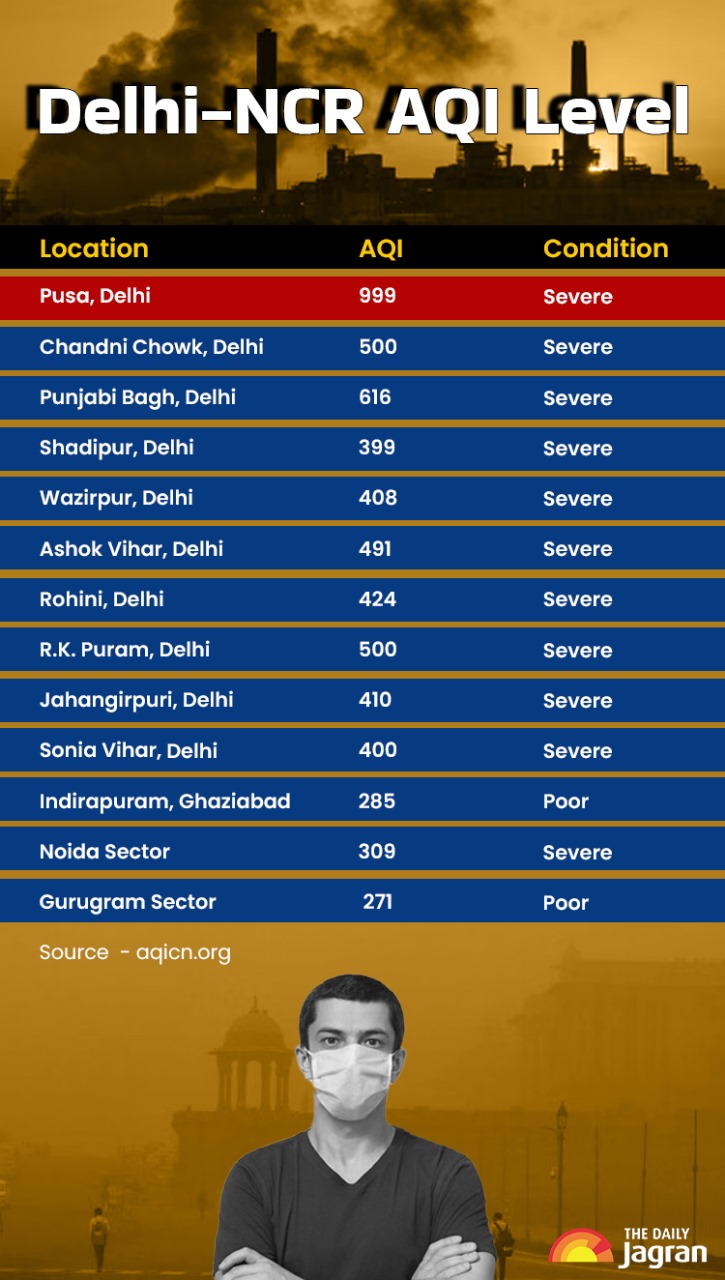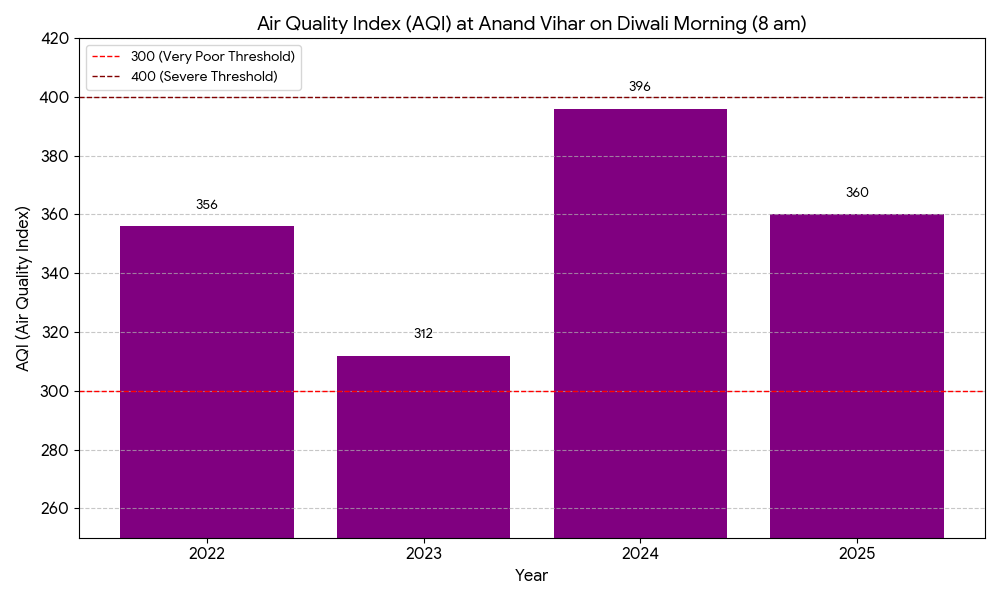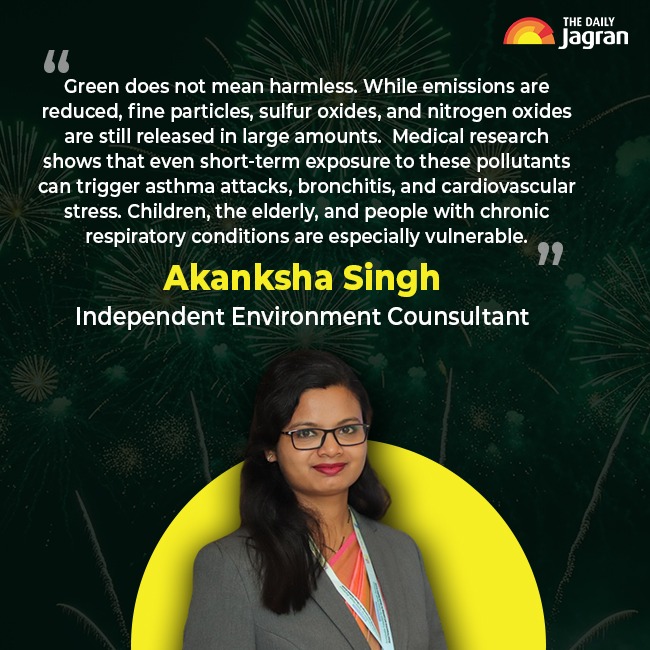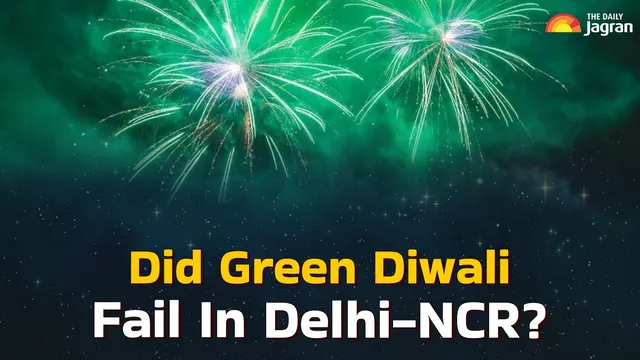- By Priyanka Koul
- Tue, 21 Oct 2025 10:26 AM (IST)
- Source:JND
Delhi AQI Level: Delhi residents woke up on Tuesday to heavy grey haze darkening the city skies, reduced visibility and the air quality in the 'red zone' after many celebrated Diwali last night by bursting firecrackers beyond the two-hour limit set by the Supreme Court.
According to a Central Pollution Control Bureau (CPCB) bulletin, Delhi's Air Quality Index (AQI) was 'very poor', with a reading of 352 at 8 am. It was 346 at 5 am, 347 at 6 am and 351 at 7 am.
#WATCH | Visuals from the ITO as GRAP-2 invoked in Delhi.
— ANI (@ANI) October 21, 2025
The Air Quality Index (AQI) in the region was recorded at 259, in the 'Poor' category, this morning. pic.twitter.com/vPA2aXJszX
The toxic choked smog sky seemed to dim the festive cheer, much like it does every year after Diwali. But this time, it followed the use of the supposedly cleaner 'green crackers' as mandated by the Supreme Court.
The Supreme Court had allowed the use of green firecrackers in Delhi-NCR between 8 pm and 10 pm on Diwali, which was celebrated on Monday.

However, many flouted the court directions, with celebrations continuing late into the night. Delhi's AQI stood at 349 at 12 am and 348 at 1 am, according to hourly data from the CPCB. On Monday, 36 of the capital's 38 monitoring stations recorded pollution levels in the 'red zone', indicating 'very poor' to 'severe' air quality across the city.
The air quality is expected to slip into the 'severe' category more widely on Tuesday and Wednesday.
ALSO READ: Smog Stories: What Are Green Firecrackers? Can They Really Make Delhi's Diwali Less Polluted?
Post-Diwali Pollution: A Recurring Pattern
November 1, 2024: Real-time air quality data from SAFAR (System of Air Quality and Weather Forecasting and Research) showed Delhi’s AQI had spiked to 359 by 6:30 am the morning after Diwali. (Note: Since CPCB data for 2024 isn’t available, SAFAR figures have been used.)
November 13, 2023: Air pollution in Delhi saw a sharp rise following Diwali night, as residents disregarded a total ban on firecrackers. By 8 am, the AQI had reached 438 classified as ‘severe’. Just a day prior, on Diwali morning, it was at 269.
October 25, 2022: The AQI the morning after Diwali was 315, falling under the ‘very poor’ category.
November 5, 2021: Widespread violation of the firecracker ban worsened Delhi’s already toxic air, pushing the AQI to 454 well into the ‘severe’ range. This time of year is typically hazardous due to factors like stubble burning and vehicle emissions, and firecrackers only intensified the crisis.
#WATCH | Visuals from near Sarojini Nagar as GRAP-2 invoked in Delhi; shot at 7:15 AM
— ANI (@ANI) October 21, 2025
The Air Quality Index (AQI) around the RK Puram was recorded at 330, in the 'Very Poor' category, in Delhi this morning as per the Central Pollution Control Board (CPCB). pic.twitter.com/MGAXCILOhM
Anand Vihar Diwali AQI Trend Over the past four years
The chart clearly shows that the AQI has remained in the 'Very Poor' category (301-400) during the Diwali mornings, with the highest recorded value in 2024.
Highest AQI: 396 in 2024, which was dangerously close to the 'Severe' threshold of 400.
Lowest AQI: 312 in 2023, with PM10 noted as the main pollutant.
2025 (with permission for green crackers) recorded a 'Very Poor' AQI of 360.

AI Generated Image: Gemini
Have Green Crackers Made a Difference?
The Supreme Court introduced a firecracker ban in Delhi-NCR as early as 2014-15 to tackle escalating pollution. Yet, enforcement has remained inconsistent and public adherence poor. Year after year, air quality in the capital dips to 'very poor' or 'severe' levels around Diwali.
In 2025, the Court allowed green crackers in an effort to balance environmental concerns with industry demands. But the air quality data tells a familiar story, indicating little to no change.
Experts caution that “green” does not mean harmless. Akanksha Singh, an independent environmental consultant, explains that while emissions are reduced, fine particles, sulfur oxides, and nitrogen oxides are still released in significant amounts.

However, Transport emissions contributed 15.6 per cent to Delhi's air pollution on Monday, while other factors, including industries, accounted for 23.3 per cent, data from the Decision Support System (DSS) showed.
With pollution levels surging, the Commission for Air Quality Management (CAQM) has implemented Stage II of the Graded Response Action Plan (GRAP) across the Delhi-NCR region. This phase includes measures such as banning construction activities that generate dust, restricting the use of diesel generators, and ramping up road-cleaning efforts. If the air quality worsens further, authorities may invoke Stage III, which brings stricter curbs into force.

